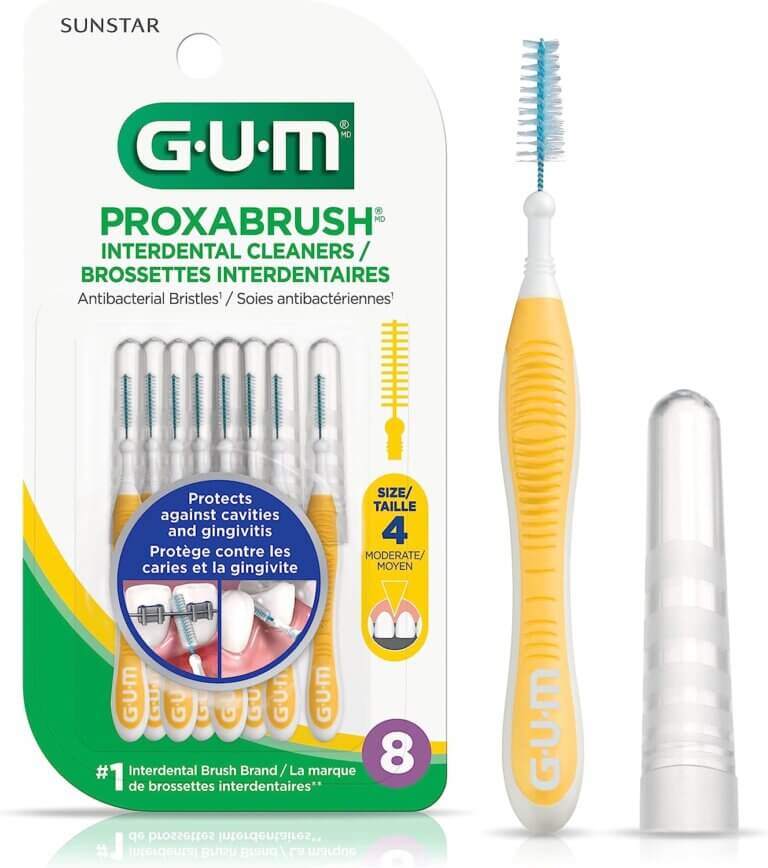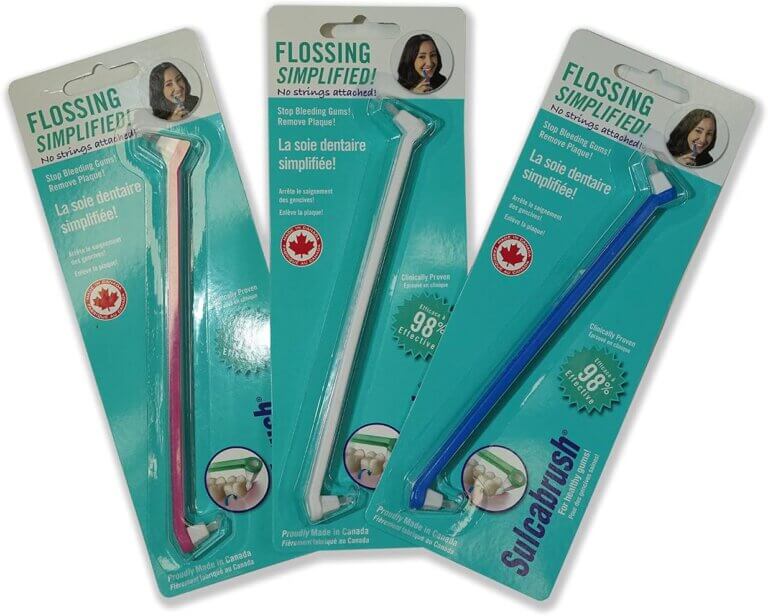How to Choose the Best Interdental Brush for Your Dental Needs
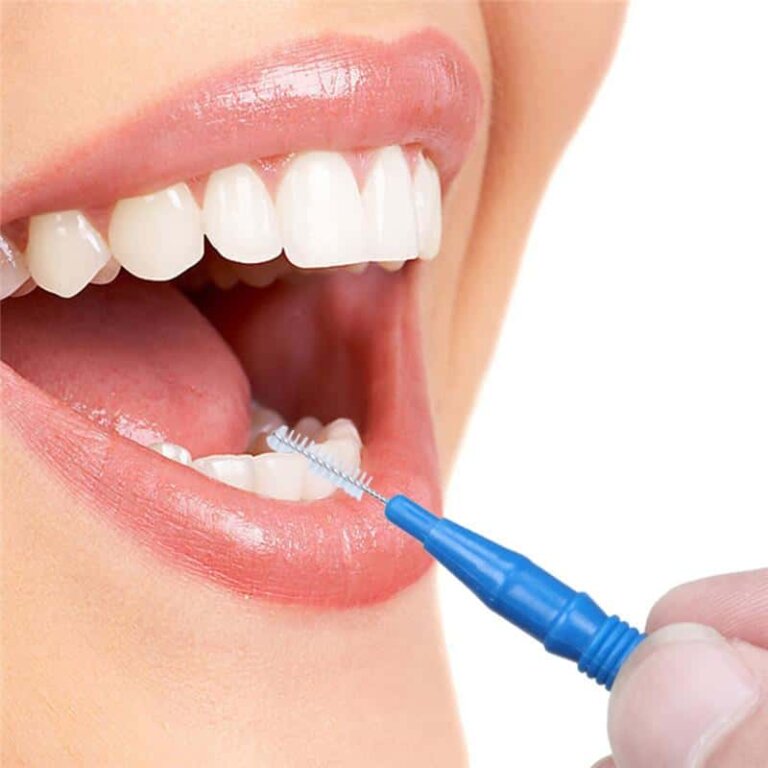
What Is An Interdental Brush?
An Interdental Brush, also known as an interproximal brush, is a small, narrow brush specifically designed to clean the tight spaces between your teeth and around dental appliances like braces, dental bridges, and dental implants. Unlike traditional toothbrushes, interdental brushes are designed to effectively remove food debris and plaque from the spaces between your teeth and prevent the development of gum disease and tooth decay. They can be seen as an additional tool to accompany regular dental string floss.
Interdental brushes come in various sizes and shapes to suit different teeth and interdental spaces. They are typically made with soft, flexible bristles that can reach difficult-to-clean areas and are gentle on your gums. Before you visit your local pharmacy to buy Interdental Brush, there are some things you should know as a dental patient:
- Why Should I Use An Interdental Brush?
- Proper Technique Using An Interdental Brush
- How Often Should I Use An Interdental Brush?
- Choosing The Right Type of Interdental Brush
- Our Recommendations for An Interdental Brush
- Alternatives to Using An Interdental Brush
If you have questions about Interdental Brush or if you need additional dental hygiene tips, please contact us for more information.
Why Should I Use An Interdental Brush?
Maintaining good oral hygiene is essential for healthy teeth and gums. While brushing twice a day and flossing daily are important components of an effective oral hygiene routine, they may not always be enough to remove plaque and food debris from the tight spaces between your teeth. Here are some reasons why you should consider using an interdental brush as part of your oral hygiene routine:
- Prevents Gum Disease: Gum disease, also known as periodontitis, is a serious condition that can lead to tooth loss if left untreated. Regular use of an interdental brush can help prevent the buildup of plaque and bacteria between your teeth and gums, reducing your risk of developing gum disease.
- Prevents Cavities: Cavities often form between teeth where your toothbrush can’t reach. Interdental brushes can help remove plaque and food particles from these areas, reducing the risk of cavities.
- Ideal for Dental Appliances: Interdental brushes are particularly useful for cleaning around dental appliances like orthodontic braces, dental bridges, and dental implants, which can trap food debris and make it difficult to maintain good oral hygiene.
- Easy to Use: Interdental brushes are easy to use and can be incorporated into your daily oral hygiene routine. They can be used at home or on the go.
- Cost Effective: Interdental brushes are a cost-effective way to maintain good oral hygiene. They are affordable and readily available at most drugstores.
In summary, using an interdental brush can help prevent gum disease, reduce bad breath, improve your overall oral health, and make it easier to maintain good oral hygiene, particularly if you have dental appliances.
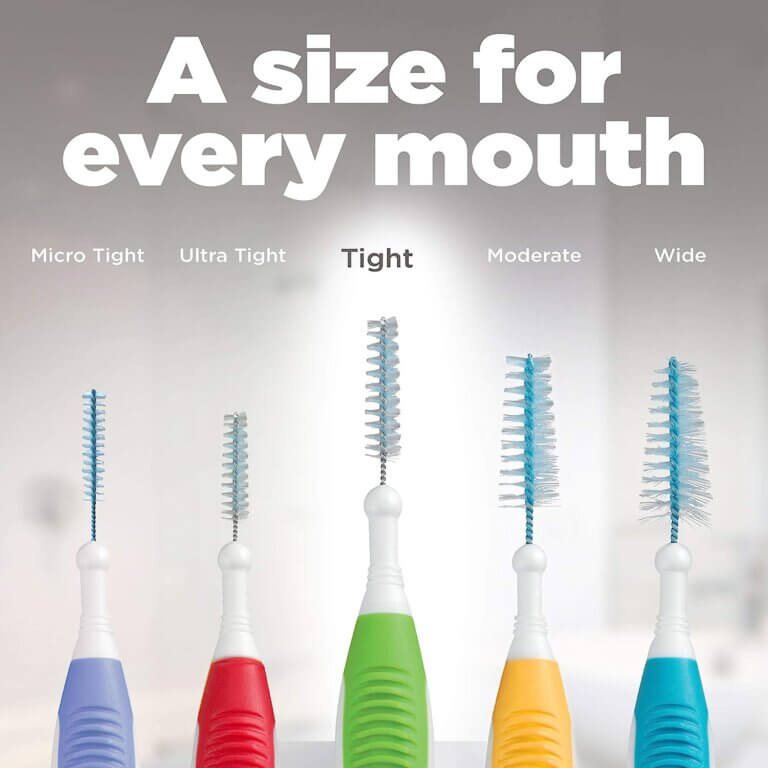
Proper Technique Using An Interdental Brush
Using an interdental brush may seem intimidating at first, but with the right technique, it can be a simple and effective way to improve your oral hygiene. Here are some steps to follow when using an interdental brush:
- Choose the Right Size: Interdental brushes come in different sizes, so it’s important to choose the right size for your teeth. If the brush is too small, it won’t effectively clean the spaces between your teeth, and if it’s too large, it may cause discomfort or damage your gums. Your dentist can recommend the right size for your teeth.
- Insert the Brush: Insert the brush gently into the space between your teeth. You may need to wiggle it back and forth to get it into place.
- Clean the Space: Once the brush is in place, move it back and forth to clean the space between your teeth. Be sure to clean both sides of each tooth and move the brush along the gum line as well.
- Rinse: After using the interdental brush, rinse your mouth with water to remove any debris.
- Clean the Brush: Rinse the brush with water and let it air dry.
- Replace the Brush: Interdental brushes should be replaced regularly, typically every two to four weeks, depending on how frequently you use them and the condition of the bristles.
It’s important to use an interdental brush properly to avoid damaging your gums or teeth. Avoid using too much pressure, as this can cause discomfort or even bleeding. If you experience pain or discomfort while using an interdental brush, talk to your dentist. By following these proper techniques, you can ensure that you’re using the brush safely and effectively to maintain healthy teeth and gums.
How Often Should I Use An Interdental Brush?
Using an interdental brush is an important part of maintaining good oral hygiene, but how often should you use it? The answer depends on your individual needs and oral health.
Most dentists recommend using an interdental brush at least once a day, ideally before brushing your teeth. This will help remove food debris and plaque from between your teeth and prevent the buildup of bacteria that can lead to gum disease and tooth decay.
However, if you have braces, dental implants, or other dental appliances, you may need to use an interdental brush more frequently to keep these areas clean, perhaps after every meal. Additionally, you may want to brush these spaces after every meal if you find that food gets trapped in the spaces between your teeth easily and causes frequent gum irritation. Your dentist can advise you on the best frequency and technique for using an interdental brush based on your specific needs.
It’s also important to remember that interdental brushes are not a substitute for brushing your teeth and flossing regularly. These practices are still essential for maintaining good oral hygiene and preventing dental problems. You should also schedule regular dental checkups and cleanings with your dentist to help identify any potential dental problems and recommend the best oral hygiene practices for your individual needs.
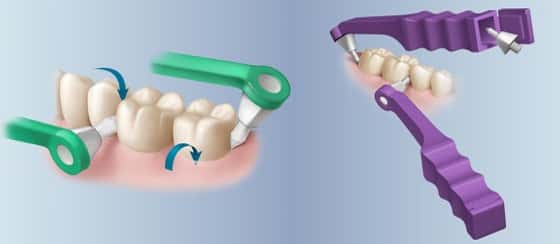
Choosing The Right Type of Interdental Brush
Interdental brushes come in a variety of shapes and sizes, making it important to choose the right type for your individual needs. Here are some factors to consider when choosing the right type of interdental brush:
- Size: Interdental brushes come in different sizes to fit between different tooth gaps. Choose a size that fits comfortably between your teeth without causing discomfort or pain. Your dentist can help you choose the right size for your teeth.
- Shape: Interdental brushes come in various shapes, including straight, angled, and tapered. Consider the shape of your teeth and choose a brush that can effectively clean the spaces between them.
- Bristle Material: Interdental brushes are made with different types of bristle material, including nylon and metal. Nylon brushes are softer and gentler on your teeth and gums, while metal brushes are more durable and may be better for removing tough plaque buildup.
- Handle: The handle of an interdental brush can make it easier or more difficult to use. Choose a handle that is comfortable to grip and allows you to easily reach all areas of your mouth.
- Brand: Look for interdental brushes from reputable brands that have a proven track record of quality and effectiveness.
Remember to replace your interdental brush regularly, typically every two to four weeks, depending on how frequently you use it and the condition of the bristles. Your dentist can also offer guidance and recommendations to help you choose the best type of interdental brush for your individual needs.
Our Recommendations for An Interdental Brush
Choosing the right interdental brush can be overwhelming, especially with so many options available. Here are our recommendations for the best interdental brushes on the market:
Introducing the GUM Proxabrush, the best overall interdental brush on the market. This innovative interdental brush comes with a unique triangular-shaped bristle that gently and effectively cleans between teeth, removing plaque and debris that your toothbrush cannot reach.
The GUM Proxabrush comes with a flexible handle that allows you to easily reach all areas of your mouth, including tight spaces between teeth and around dental appliances like braces and dental implants. The handle also features a non-slip grip, ensuring that you can use it comfortably and safely.
One of the standout features of the GUM Proxabrush is its selection of refillable heads. The package comes with eight replaceable brush heads that are color-coded to help you easily distinguish between sizes. This makes it easy to find the perfect fit for your unique dental needs.
The GUM Proxabrush is also incredibly versatile, suitable for use with a variety of interdental cleaners and dental appliances. It’s gentle on teeth and gums, making it an ideal choice for those with sensitive teeth or gums.
Overall, the GUM Proxabrush is the best overall interdental brush for maintaining good oral hygiene. Its unique triangular bristles, flexible handle, and refillable brush heads make it a great choice for anyone looking to improve their oral health. Order yours today and experience the benefits of this innovative dental tool!
Introducing the Sulcabrush, the best narrow head toothbrush on the market. This innovative interdental brush features an ultra-slim, angled head that effectively cleans between teeth, removing plaque and debris that your regular toothbrush cannot reach.
The Sulcabrush is specifically designed for those with narrow spaces between their teeth, making it a great choice for anyone struggling to clean between tight gaps. Its slim design also makes it easy to maneuver, allowing you to effectively clean even hard-to-reach areas.
The Sulcabrush features soft, nylon bristles that are gentle on teeth and gums, making it an ideal choice for those with sensitive teeth or gums. The bristles are also durable and long-lasting, ensuring that you get the most out of each brush head.
One of the standout features of the Sulcabrush is its flexibility. It’s designed to bend and contour to the shape of your teeth and gums, ensuring a thorough and effective clean every time. Its flexible handle also makes it easy to grip and control while brushing.
Overall, the Sulcabrush is the best narrow head toothbrush for maintaining good oral hygiene. Its ultra-slim, angled head, soft nylon bristles, and flexibility make it a great choice for anyone looking to improve their oral health. Order yours today and experience the benefits of this innovative dental tool!
Alternatives to Using An Interdental Brush
While interdental brushes are an effective tool for removing plaque and food particles from between your teeth, they may not be suitable for everyone. Here are some alternatives to using an interdental brush:
- String Floss: Traditional dental floss is a simple and effective way to clean between teeth and along the gum line. It’s readily available at most drugstores and is affordable.
- Water Flosser: A water flosser uses a stream of water to clean between teeth and along the gum line. It’s an effective alternative for those who find it difficult to use traditional dental floss or interdental brushes.
Remember, good oral hygiene requires daily brushing and flossing to remove plaque and prevent cavities and gum disease. Consult with your dentist to find the right dental tool for your individual needs.

